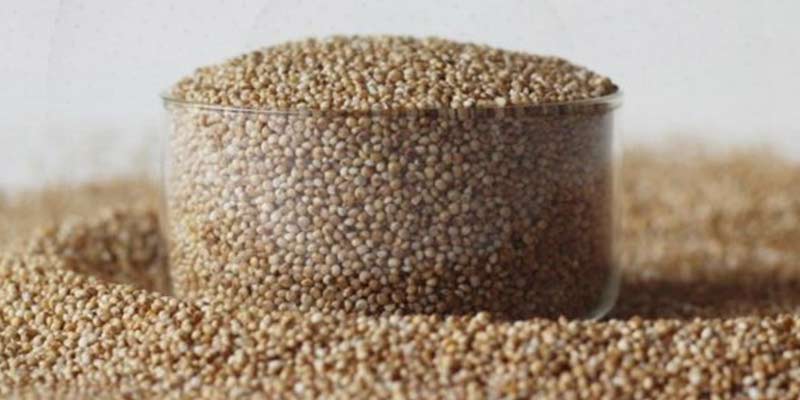- India
- Feb 26
FSSAI specifies comprehensive group standard for millets
• The Food Safety and Standards Authority of India (FSSAI) has specified a comprehensive group standard for millets — Food Safety and Standards, Second Amendment Regulations, 2023 — and this will be enforced from September 1, 2023.
• Currently, individual standards for only a few millets like sorghum (jowar), whole and decorticated pearl millet grain (bajra), finger millet (ragi) and amaranth are prescribed in the Food Safety and Standards (Food Product Standards and Food Additives) Regulations, 2011.
• The FSSAI has now framed a comprehensive group standard for 15 types of millets specifying 8 quality parameters like maximum limits for moisture content, uric acid content, extraneous matter, other edible grains, defects, weevilled grains, and immature and shrivelled grains, so as to ensure availability of good quality (standardised) millets in domestic and global markets.
• In the Budget Speech, Finance Minister Nirmala Sitharaman noted that India is the largest producer and second largest exporter of ‘Shri Anna’ (millets) in the world.
International Year of Millets
• Millets are a collective group of small seeded annual grasses that are grown as grain crops, primarily on marginal land in dry areas of temperate, sub-tropical and tropical regions.
• Millets were rendered as ‘orphan crops’ – less consumed and almost forgotten. Before ‘Green Revolution’ in the 1960s, millets made up around 40 per cent of all cultivated grains, which has dropped to around 20 per cent over the years.
• Not only has the consumption of millets declined, but the area under production has been replaced with commercial crops, oilseeds, pulses and maize. These commercial crops are profitable, and their production is supported by several policies through subsidised inputs, incentivised procurement and inclusion in the Public Distribution System.
• Given the nutritional value of the millets, the government notified millets as nutri-cereals in April 2018.
• The United Nations has declared 2023 the International Year of Millets at the request of the government of India to raise awareness and increase the production and consumption of millets.
• The International Year of Millets will raise awareness about the contribution of millets for food security and nutrition, motivate stakeholders for continuous production and quality improvement of millets and attract attention to increase investment in research and development services.
• Millets are smart food with high nutritional value, are climate resilient, and align with several UN Sustainable Development Goals (SDGs). These are also important by virtue of their mammoth potential to generate livelihood, increase farmers’ income and ensure food & nutritional security all over the world.
• Asia and Africa are the major production and consumption centres of millet crops. India, Niger, Sudan and Nigeria are the major producers of millets.
• India produces more than 50.9 million tonnes (as per fourth advance estimate) of millet which accounts for 80 per cent of Asia’s and 20 per cent of global production.
• The global average yield is 1,229 kg/ha, whereas India has a higher average yield of 1,239 kg/ha.
• Being grown in more than 130 countries at present, millets are considered traditional food for more than half a billion people across Asia and Africa.
• In India, millets are primarily a Kharif crop mostly grown in rainfed conditions, requiring less water and agricultural inputs than other staple crops.
• Pearl millet (Bajra) and sorghum (jowar) constitute the largest share in India’s total production of millets. Remaining production comes from ragi (finger millets), cheena (proso millets), foxtail millets (kangni) and other non-segregated millets. Most of the states in India grow one or more millet crops.
• The major millet producing states in India are Rajasthan, Uttar Pradesh, Haryana, Gujarat, Madhya Pradesh, Maharashtra, Karnataka, Tamil Nadu, Andhra Pradesh and Telangana.
• Under the National Food Security Mission (NFSM), millets have been introduced to provide nutritional support. A sub-mission on nutri-cereals is being implemented since 2018-19 in 212 districts of 14 states.
• India has more than 500 startups working in the millet value chains, while the Indian Institute of Millets Research has incubated 250 startups under Rashtriya Krishi Vikas Yojana – Remunerative Approaches for Agriculture and Allied Sectors Rejuvenation.
Manorama Yearbook app is now available on Google Play Store and iOS App Store


